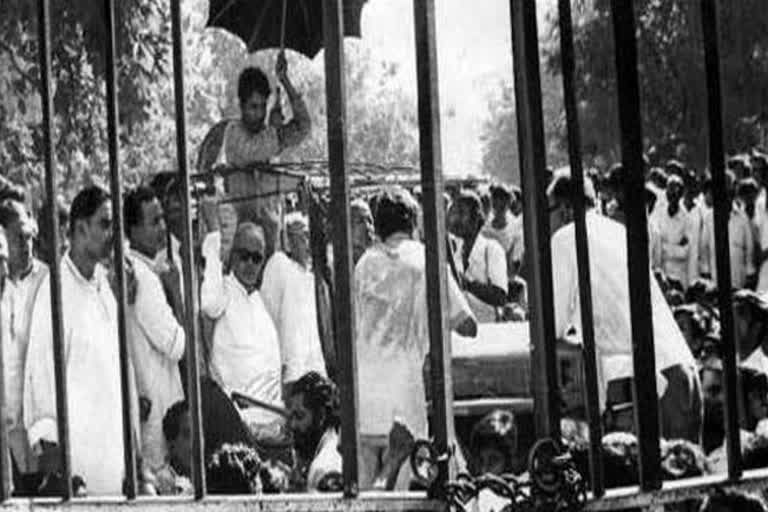Chandigarh:The Emergency, imposed by the then Prime Minister Indira Gandhi on the night of 25 June 1975, has been called the 'darkest episode of Indian democracy'. Haryana was one of the most affected states during the period. Many temporary jails were built here, in which thousands of politicians and those who opposed the Emergency were placed under arrest. Even today, when leaders of the Emergency era narrate their experiences, it reminds us of the horrors of autocracy and dictatorship.
The reason for Haryana being affected more during the Emergency was Bansi Lal, who was then Chief Minister of Haryana. During the Emergency, Indira Gandhi called him to Delhi and made him the Defense Minister. Bansi Lal was very close to Sanjay Gandhi and a confidante of Indira Gandhi. He was part of the cabal around Sanjay Gandhi, along with V C Shukla, Om Mehta and others, who were termed 'the Emergency caucus'. It was allegedly this group, led by Sanjay Gandhi, which had been responsible for various harsh steps implemented during the Emergency. BK Nehru in his autobiography 'Nice Guy's Finish Second' had even mentioned Bansi Lal's admiration for Indira Gandhi. "If you ask me, just make our sister President for life and there’s no need to do anything else," Bansi Lal had said.
Read:Emergency in India: A glance at the nation's darker past
Remembering the era of Emergency, people still say that the whole of Haryana had become a big jail, with people being apprehended for dissent. Apart from this, people were also held forcefully and mass sterilised. During this period, even top leaders were placed in the jails of Mahendragarh or Hisar, with Chaudhary Devi Lal, one of the most vocal voices of the state against the government at that time, lodged in Mahendragarh jail. Among his two sons who were arrested was Om Prakash Chautala who was kept in Hisar jail.
Dr Chandra Trikha in his book 'How to forget the sting of Emergency?' says "Chaudhary Devi Lal was one of the regional pillars of the anti-Emergency movement. When the opposition parties met in Delhi after Indira Gandhi's election was declared invalid, he represented Haryana and became the Chief Minister of a non-Congress government in 1977. Bhajan Lal also became a minister in this government, who had left the Congress post Emergency."
